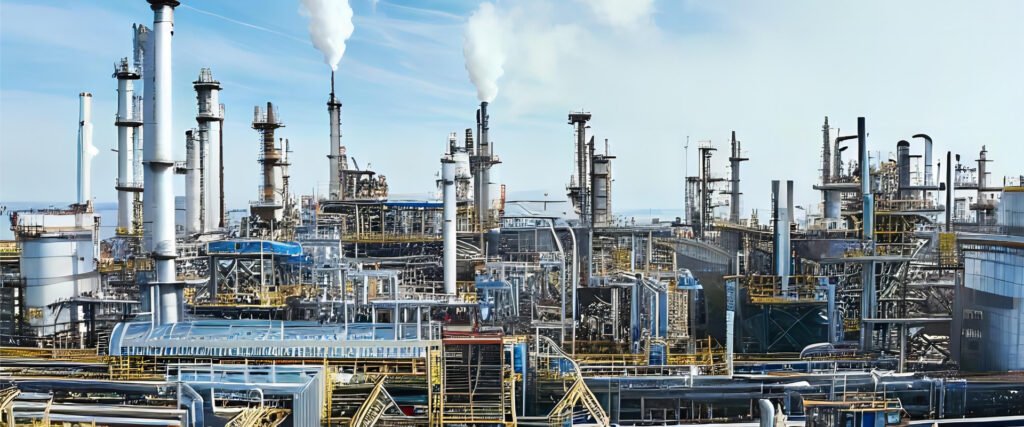Your cart is currently empty!
TEL:08615998857658

EPM ethylene propylene polymer
Ethylene propylene copolymer (EPM) and ethylene propylene diene terpolymer (EPDM) are commonly used as viscosity index (VI) improvers in lubricating oils.
Description
| Ethylene propylene copolymer (EPM) and ethylene propylene diene terpolymer (EPDM) are commonly used as viscosity index (VI) improvers in lubricating oils. These polymers are added to enhance the viscosity-temperature relationship of the oil, ensuring better lubrication across a wide range of temperatures.
The viscosity index of an oil indicates how its viscosity changes with temperature variations. High viscosity index oils have a more stable viscosity across temperature changes, which is desirable for efficient lubrication in various conditions. Ethylene propylene polymers are particularly effective VI improvers because they exhibit excellent shear stability and resistance to oxidation, making them suitable for use in engine oils, hydraulic fluids, and other lubricants. These polymers work by reducing the rate at which the oil’s viscosity changes with temperature, ensuring the oil maintains its lubricating properties under different operating conditions. This is especially crucial in automotive engines and other machinery where the operating temperatures can vary significantly. By incorporating ethylene propylene polymers as viscosity index improvers, lubricant manufacturers can create oils that offer better protection and performance across a broader temperature range, contributing to the overall efficiency and longevity of the machinery they lubricate. |
Ethylene propylene copolymer (EPM) and ethylene propylene diene terpolymer (EPDM) are both types of synthetic rubber polymers commonly used as viscosity index (VI) improvers in lubricating oils.
Here’s how they work and why they are used:
1. **Viscosity Index (VI) Improvers**: Viscosity index improvers are additives that help regulate the viscosity of lubricating oils over a range of temperatures. They help maintain optimal viscosity under varying operating conditions, providing proper lubrication and protection to machinery and engines.
2. **Polymer Structure**: EPM and EPDM are both ethylene-propylene-based elastomers with different chemical structures. EPM is a copolymer of ethylene and propylene, while EPDM is a terpolymer that also contains a small amount of a diene monomer, typically a conjugated diene like ethylidene norbornene (ENB) or dicyclopentadiene (DCPD).
3. **Temperature Sensitivity**: These polymers exhibit excellent temperature sensitivity, meaning they can adjust their viscosity properties based on temperature changes. At lower temperatures, they act as pour point depressants, preventing the oil from thickening and maintaining fluidity. At higher temperatures, they act as viscosity modifiers, increasing the viscosity to ensure proper lubrication and film thickness.
4. **Improving Viscosity Index**: By incorporating EPM or EPDM into lubricating oils, manufacturers can improve the viscosity index of the oil. This means that the oil’s viscosity remains relatively stable over a wide temperature range, providing consistent lubrication performance in both cold start-up conditions and high-temperature operating environments.
5. **Enhancing Shear Stability**: Additionally, EPM and EPDM can enhance the shear stability of lubricating oils, reducing viscosity loss due to mechanical stress or shear forces encountered during operation.
Overall, EPM and EPDM are valuable additives in lubricating oil formulations, helping to optimize viscosity properties, improve temperature performance, and enhance overall lubrication effectiveness in a wide range of applications, including automotive engines, industrial machinery, and hydraulic systems.
Ethylene Propylene Copolymer (EPM) and Ethylene Propylene Diene Terpolymer (EPDM) are indeed commonly used as Viscosity Index (VI) improvers in lubricating oils. Here’s a breakdown of their roles:
Viscosity Index (VI):
- VI is a crucial property of lubricating oils, indicating how much their viscosity changes with temperature.
- Ideally, we want the oil’s viscosity to:
- Remain high at high temperatures to maintain a lubricating film and prevent wear.
- Not be too high at low temperatures to allow for easy engine starting and oil circulation.
Role of EPM and EPDM as VI Improvers:
- EPM and EPDM are long-chain polymers that act like tiny coils within the oil.
- At low temperatures, these coils are more contracted, allowing the oil to flow more easily and aiding cold-start performance.
- At high temperatures, the coils uncoil and expand, increasing the oil’s viscosity and maintaining its lubricating properties.
Key differences between EPM and EPDM in VI application:
- Crystallinity: EPM is generally amorphous, meaning its polymer chains are randomly arranged. In contrast, EPDM can be partially crystalline due to the presence of diene monomers, impacting its behavior.
- Low-temperature performance: EPM might offer slightly better low-temperature performance due to its complete amorphous nature.
- Shear stability: EPDM, particularly the partially crystalline type, can exhibit improved shear stability compared to EPM at high temperatures. This means it maintains its thickening effect better under shearing forces within the engine.
Overall, both EPM and EPDM are valuable VI improvers, offering different advantages and considerations for their use in specific formulations. The choice between them depends on the desired balance of low-temperature fluidity, high-temperature viscosity maintenance, and shear stability in the final lubricating oil product.







Reviews
There are no reviews yet.